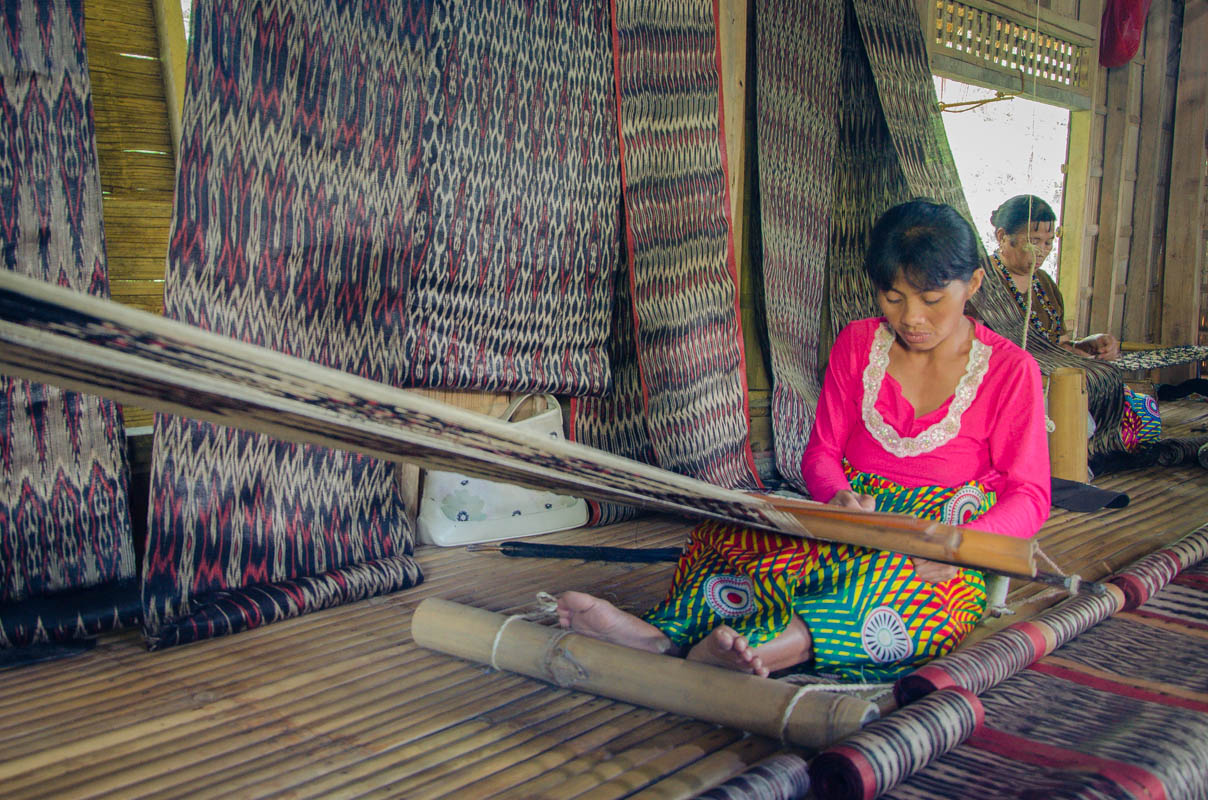|
Schools Of Living Traditions
The Schools of Living Traditions (SLTs) are education institutions in the Philippines dedicated to indigenous arts, crafts and other traditions. The National Commission for Culture and the Arts (NCCA) under Felipe M. de Leon, Jr. launched its program on SLTs in 1995. The NCCA supports SLTs as part of the UNESCO's mandate to preserve living traditions of the indigenous peoples. SLTs are community-managed centers of learning headed by cultural masters and specialists who teaches knowledge or skills on a particular art, craft and tradition to the youth. The conduct of teaching in SLTs is often non-formal, oral and with practical demonstrations. There are currently 28 SLTs being implemented across the Philippines. In 2021, the SLTs were included in the Register of Good Safeguarding Practices under the UNESCO Intangible Cultural Heritage List. The inclusion in the UNESCO list recognizes the efforts of the SLTs to safeguard traditional and cultural knowledge and practices from the ... [...More Info...] [...Related Items...] OR: [Wikipedia] [Google] [Baidu] |
Philippines
The Philippines (; fil, Pilipinas, links=no), officially the Republic of the Philippines ( fil, Republika ng Pilipinas, links=no), * bik, Republika kan Filipinas * ceb, Republika sa Pilipinas * cbk, República de Filipinas * hil, Republika sang Filipinas * ibg, Republika nat Filipinas * ilo, Republika ti Filipinas * ivv, Republika nu Filipinas * pam, Republika ning Filipinas * krj, Republika kang Pilipinas * mdh, Republika nu Pilipinas * mrw, Republika a Pilipinas * pag, Republika na Filipinas * xsb, Republika nin Pilipinas * sgd, Republika nan Pilipinas * tgl, Republika ng Pilipinas * tsg, Republika sin Pilipinas * war, Republika han Pilipinas * yka, Republika si Pilipinas In the recognized optional languages of the Philippines: * es, República de las Filipinas * ar, جمهورية الفلبين, Jumhūriyyat al-Filibbīn is an archipelagic country in Southeast Asia. It is situated in the western Pacific Ocean and consists of around 7,641 islands t ... [...More Info...] [...Related Items...] OR: [Wikipedia] [Google] [Baidu] |
National Commission For Culture And The Arts
The National Commission for Culture and the Arts of the Philippines ( fil, Pambansang Komisyon para sa Kultura at mga Sining, ceb, Nasodnong Komisyon alang sa Budaya ug mga Arte) is the official government agency for culture in the Philippines. It is the overall policy making body, coordinating, and grants giving agency for the preservation, development and promotion of Philippine arts and culture; an executing agency for the policies it formulates; and task to administering the National Endowment Fund for Culture and the Arts (NEFCA) – fund exclusively for the implementation of culture and arts programs and projects. History The successful overthrow of the dictatorship in 1986 through the People Power Revolution inspired the different sectors of society to rally behind the new government towards the restoration of democracy. On March 12, 1986, the Alliance of Artists for the Creation of a Ministry of Culture (AACMC) drafted and adopted a proposal for the establishment of a ... [...More Info...] [...Related Items...] OR: [Wikipedia] [Google] [Baidu] |
UNESCO
The United Nations Educational, Scientific and Cultural Organization is a specialized agency of the United Nations (UN) aimed at promoting world peace and security through international cooperation in education, arts, sciences and culture. It has 193 member states and 12 associate members, as well as partners in the non-governmental, intergovernmental and private sector. Headquartered at the World Heritage Centre in Paris, France, UNESCO has 53 regional field offices and 199 national commissions that facilitate its global mandate. UNESCO was founded in 1945 as the successor to the League of Nations's International Committee on Intellectual Cooperation.English summary). Its constitution establishes the agency's goals, governing structure, and operating framework. UNESCO's founding mission, which was shaped by the Second World War, is to advance peace, sustainable development and human rights by facilitating collaboration and dialogue among nations. It pursues this objective t ... [...More Info...] [...Related Items...] OR: [Wikipedia] [Google] [Baidu] |
Non Formal Education
Non-formal learning includes various structured learning situations which do not either have the level of curriculum, syllabus, accreditation and certification associated with 'formal learning', but have more structure than that associated with 'informal learning', which typically take place naturally and spontaneously as part of other activities. These form the three styles of learning recognised and supported by the OECD. Examples of non-formal learning include swimming sessions for toddlers, community-based sports programs, and programs developed by organisations such as the Boy Scouts, the Girl Guides, community or non-credit adult education courses, sports or fitness programs, professional conference style seminars, and continuing professional development. The learner's objectives may be to increase skills and knowledge, as well as to experience the emotional rewards associated with increased love for a subject or increased passion for learning. History The debate over the ... [...More Info...] [...Related Items...] OR: [Wikipedia] [Google] [Baidu] |
Oral Tradition
Oral tradition, or oral lore, is a form of human communication wherein knowledge, art, ideas and cultural material is received, preserved, and transmitted orally from one generation to another. Vansina, Jan: ''Oral Tradition as History'' (1985), reported statements from present generation which "specifies that the message must be oral statements spoken, sung or called out on musical instruments only"; "There must be transmission by word of mouth over at least a generation". He points out, "Our definition is a working definition for the use of historians. Sociologists, linguists or scholars of the verbal arts propose their own, which in, e.g., sociology, stresses common knowledge. In linguistics, features that distinguish the language from common dialogue (linguists), and in the verbal arts features of form and content that define art (folklorists)."Ki-Zerbo, Joseph: "Methodology and African Prehistory", 1990, ''UNESCO International Scientific Committee for the Drafting of a Gene ... [...More Info...] [...Related Items...] OR: [Wikipedia] [Google] [Baidu] |
UNESCO Intangible Cultural Heritage Lists
UNESCO established its Lists of Intangible Cultural Heritage with the aim of ensuring better protection of important intangible cultural heritages worldwide and the awareness of their significance.Compare: This list is published by the Intergovernmental Committee for the Safeguarding of Intangible Cultural Heritage, the members of which are elected by State Parties meeting in a General Assembly. Through a compendium of the different oral and intangible treasures of humankind worldwide, the programme aims to draw attention to the importance of safeguarding intangible heritage, which UNESCO has identified as an essential component and as a repository of cultural diversity and of creative expression. The list was established in 2008 when the 2003 Convention for the Safeguarding of the Intangible Cultural Heritage took effect. the programme compiles two lists. The longer, Representative List of the Intangible Cultural Heritage of Humanity, comprises cultural "practices and expressio ... [...More Info...] [...Related Items...] OR: [Wikipedia] [Google] [Baidu] |
T'nalak
''T'nalak'' (also spelled ''tinalak''), is a weaving tradition of the T'boli people of South Cotabato, Philippines. T'nalak cloth is woven exclusively by women who have received the designs for the weave in their dreams, which they believe are a gift from Fu Dalu, the T'boli Goddess of abacá. The rest of the community, including the men, are able to participate in the production of T'nalak by carefully selecting, stripping, and sun-drying the abacá fibers to be used. Once the fibers have been prepared, they are dyed using the dye-resist technique called "ikat", based on the pattern dreamt by the weaver; the woman gifted by Fu Dalu with the design then weaves the cloth using a backstrap loom. The fact that the designs are derived from the dreams of the weavers means that traditional t'nalak patterns cannot be mass-produced. Because the patterns are based on dreams, the weavers of t'nalak are popularly referred to as ''dreamweavers.'' Production and history T'nalak weaving is pa ... [...More Info...] [...Related Items...] OR: [Wikipedia] [Google] [Baidu] |
Tboli People
The Tboli people () are one of the indigenous peoples of South Cotabato in southern Mindanao. In the body of ethnographic and linguistic literature on Mindanao, their name is variously spelt Tboli, T'boli, Tböli, Tagabili, Tagabilil, Tagabulul and Tau Bilil. Their endonym is Tboli. Their whereabouts and identity are somewhat imprecise in the literature; some publications present the Tboli and the Tagabili as distinct peoples; some locate the Tbolis in the vicinity of Lake Buluan in the Cotabato Basin or in Agusan del Norte. The Tbolis, then, reside on the mountain slopes on either side of the upper Alah Valley and the coastal area of Maitum, Maasim and Kiamba. In former times, the Tbolis also inhabited the upper floor of the Alah Valley. After World War II and the arrival of settlers from other parts of the Philippines, they have been gradually pushed to the mountain slopes. As of now, they have almost been expelled from the fertile valley floor. Like their immediate neighbou ... [...More Info...] [...Related Items...] OR: [Wikipedia] [Google] [Baidu] |
Art Schools In The Philippines
Art is a diverse range of human activity, and resulting product, that involves creative or imaginative talent expressive of technical proficiency, beauty, emotional power, or conceptual ideas. There is no generally agreed definition of what constitutes art, and its interpretation has varied greatly throughout history and across cultures. In the Western tradition, the three classical branches of visual art are painting, sculpture, and architecture. Theatre, dance, and other performing arts, as well as literature, music, film and other media such as interactive media, are included in a broader definition of the arts. Until the 17th century, ''art'' referred to any skill or mastery and was not differentiated from crafts or sciences. In modern usage after the 17th century, where aesthetic considerations are paramount, the fine arts are separated and distinguished from acquired skills in general, such as the decorative or applied arts. The nature of art and related concepts, suc ... [...More Info...] [...Related Items...] OR: [Wikipedia] [Google] [Baidu] |
1995 Establishments In The Philippines
File:1995 Events Collage V2.png, From left, clockwise: O.J. Simpson is acquitted of the murders of Nicole Brown Simpson and Ronald Goldman from the year prior in "The Trial of the Century" in the United States; The Great Hanshin earthquake strikes Kobe, Japan, killing 5,000-6,000 people; The Unabomber Manifesto is published in several U.S. newspapers; Gravestones mark the victims of the Srebrenica massacre near the end of the Bosnian War; Windows 95 is launched by Microsoft for PC; The first exoplanet, 51 Pegasi b, is discovered; Space Shuttle Atlantis docks with the Space station Mir in a display of U.S.-Russian cooperation; The Alfred P. Murrah Federal Building in Oklahoma City is bombed by domestic terrorists, killing 168., 300x300px, thumb rect 0 0 200 200 O. J. Simpson murder case rect 200 0 400 200 Kobe earthquake rect 400 0 600 200 Unabomber Manifesto rect 0 200 300 400 Oklahoma City bombing rect 300 200 600 400 Srebrenica massacre rect 0 400 200 600 Space Shuttle ... [...More Info...] [...Related Items...] OR: [Wikipedia] [Google] [Baidu] |
Educational Institutions Established In 1995
Education is a purposeful activity directed at achieving certain aims, such as transmitting knowledge or fostering skills and character traits. These aims may include the development of understanding, rationality, kindness, and honesty. Various researchers emphasize the role of critical thinking in order to distinguish education from indoctrination. Some theorists require that education results in an improvement of the student while others prefer a value-neutral definition of the term. In a slightly different sense, education may also refer, not to the process, but to the product of this process: the mental states and dispositions possessed by educated people. Education originated as the transmission of cultural heritage from one generation to the next. Today, educational goals increasingly encompass new ideas such as the liberation of learners, skills needed for modern society, empathy, and complex vocational skills. Types of education are commonly divided into formal, ... [...More Info...] [...Related Items...] OR: [Wikipedia] [Google] [Baidu] |



.png)




